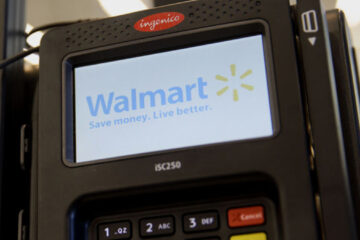Friends, Romans and countrymen, lend me your taste buds.
Imagine for a moment that you’re walking down the street of a city in Ancient Rome and you suddenly get the munchies.
💵💰Don’t miss the move: Subscribe to TheStreet’s free daily newsletter 💰
You’re dying for something to eat but you’re running late for the gladiator tournament — where people are dying for a living. What do you do?
Okay, Brutus, don’t get your toga in a knot. All you have to do is stop at the nearest thermopolia for some eats.
These were open-air counters selling prepared hot and cold meals, and they offered meats, cheeses, vegetables, olives, legumes, pastries, and drinks like wine and spiced beverages.
While some thermopolia had a few seats, the primary focus was on quick, on-the-go meals — which might sound an awful lot like today’s fast food restaurants.
The quick-service-restaurant concept has continued through the centuries and now this global fast-food market is valued at roughly $902.1 billion, with the U.S. fast-food market alone valued at $417.5 billion.
Wendy’s is launching a new campaign to bring in more customers. (Photo: Artur Widak-NurPhoto via Getty Images)
Wendy’s CEO: consumers under pressure
Wendy’s (WEN) is one of the biggest names in the QRS space. Founded in 1969 by Dave Thomas, the company is now the world’s third-largest fast-food hamburger chain.
But the QRS industry is currently contending with rising costs, labor shortages and increased competition.
On May 3 Wendy’s posted mixed first-quarter earnings and trimmed its outlook for the year, warning that sales in 2025 might fall from a year earlier.
During the Dublin, Ohio, company’s earnings call President and CEO Kirk Tanner noted the tough economic climate.
“The consumer certainly is under pressure,” he told analysts. “I think that’s reflected in the Q1 numbers, and we see that persisting. We thought it was prudent to plan if the consumer is under pressure for the full year, what do we do to control what we can control.”
More Restaurants
McDonald’s launches a bold new restaurant conceptPopular pizza chain closes locations in bankruptcyChipotle fans skeptical of its latest restaurant move
Consumer sentiment tumbled 11% last month to the second-lowest reading on record going back to 1952, amid concerns about inflation and tariffs. April’s reading was lower than anything seen during the Great Recession.
In this environment, Tanner said, “we know that customers are looking for an even more compelling reason to visit restaurants.”
“In response to changing consumer behavior, we’re launching a new 100 Days of Summer campaign to provide customers even more of our fresh, famous food through core innovation, collaborations, and value offerings at a time when our customers need it most,” he said.
Fast-food chains: Consumers pulling back
Other QRS companies have been feeling the heat.
McDonald’s (MCD) CEO Christopher Kempczinski recently said that the number of low-income consumers visiting U.S. fast-food restaurants was down “nearly double digits” in the year’s first three months compared with 2024. Visits from middle-income consumers across the industry “fell nearly as much,” he said.
Domino’s Pizza (DPZ) said consumers were gravitating from more expensive delivery options to cheaper carryout. Starbucks (SBUX) posted a decline in quarterly same-store sales.
The Subway sandwich chain closed 631 locations across the country in 2024 alone, bringing the company’s domestic footprint down to 19,502 stores — the lowest it’s been in two decades.
Related: Ford, Mattel join growing list of U.S. companies facing profit hit from tariffs
Hooters filed for bankruptcy after accumulating $376 million in debt.
Tanner said Wendy’s was conducting individual restaurant assessments, which are key to improving visibility and benchmarking against model performance.
“These early results have enabled us to pinpoint specific improvements that we can make to improve the customer experience and productivity, including increasing focus on training,” he said.
Wendy’s stock is down nearly 27% since January and down almost 38% from a year ago.
A mix of analyst reports on Wendy’s
Several investment firms issued research reports after Wendy’s post its earnings.
Bernstein lowered its price target on Wendy’s to $15 from $18 and affirmed a market perform rating on the shares, TheFly reported.
The investment firm said the chain’s first-quarter performance was below expectations, confirming its hypothesis that the QSR industry remains under significant pressure.
JP Morgan upgraded Wendy’s to overweight from neutral but cut its price target to $15 from $17, saying the current share price provides a “value-oriented opportunity.”
JPM sees “significant upside” to Wendy’s equity value with a 6% to 7% free cash flow yield potentially going to 8.5%.
Related: Scotts Miracle-Gro CEO raises eyebrows with tariff comments
Wendy’s strengthened its effort to meet near-term expected comparisons and has an opportunity for longer term development, especially in what the investment firm called underpenetrated international markets.
Wendy’s’ free cash flow growth profile through fiscal 2028 is “healthy” as store economics stabilize and improve, JP Morgan said.
Meanwhile Loop Capital lowered its price target on Wendy’s to $21 from $26 and maintained a buy rating on the shares.
The target cut reflects the “mixed” results, particularly same store sales missing estimates and earnings per share posted in line with expectations, the investment firm said. .
Related: Veteran fund manager unveils eye-popping S&P 500 forecast


